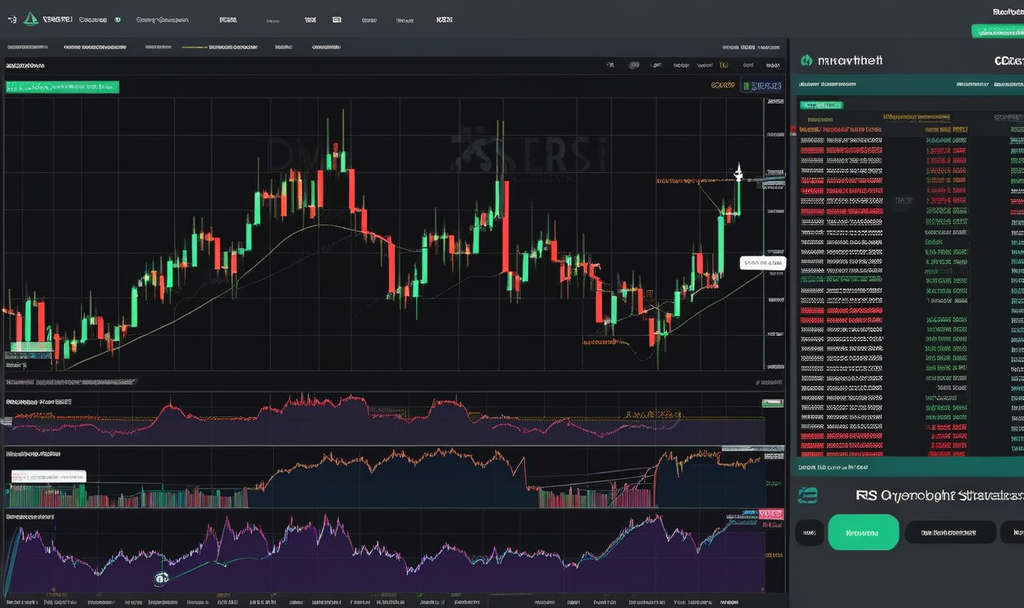Introduction:
Cryptocurrency markets, characterized by their volatility, demand sophisticated tools for effective trading. Among these tools, the Relative Strength Index (RSI) stands out as a powerful indicator. In this comprehensive guide, we will explore various RSI strategies tailored for navigating the intricate landscape of cryptocurrency trading.
Understanding RSI:
The Relative Strength Index is a momentum oscillator that measures the speed and change of price movements. RSI values range from 0 to 100, with readings above 70 indicating overbought conditions and readings below 30 signaling oversold conditions. Traders utilize RSI to identify potential trend reversals and assess the strength of price movements.
RSI Strategy 1: Classic Overbought and Oversold Conditions:
A fundamental RSI strategy involves identifying overbought and oversold conditions. When the RSI surpasses the 70 level, the asset is deemed overbought, potentially signaling an upcoming reversal. Conversely, an RSI reading below 30 suggests oversold conditions, hinting at a potential price correction.
RSI Strategy – 2: Divergence Analysis:
Divergence analysis is a more advanced RSI strategy that involves scrutinizing the relationship between RSI and price movements. Bullish divergence occurs when prices are making new lows, but the RSI is trending higher. Conversely, bearish divergence occurs when prices are reaching new highs, but the RSI is declining. These divergences can provide valuable insights into potential trend reversals.
RSI Strategy – 3: RSI Trendline Breaks:
Trendline breaks add an additional layer to RSI analysis. Traders draw trendlines on RSI charts to identify potential trend changes. A break above a downtrend line on the RSI may signal a bullish reversal, while a break below an uptrend line could indicate a bearish reversal.
RSI Strategy – 4: RSI and Support/Resistance Levels:
Incorporating RSI with support and resistance levels enhances trading precision. When RSI approaches a support level and starts to rise, it may suggest a potential bounce. Conversely, if RSI approaches a resistance level and begins to fall, it could indicate a potential downturn.
The Role of Passive Voice:
While active voice often provides clarity, the passive voice can be employed to emphasize objectivity. For instance, “The strategy was implemented, and results were analyzed” imparts information without attributing the action to a specific entity.
Overcoming Challenges with RSI Strategies:
While RSI strategies are powerful tools, they are not foolproof. Rapid market changes can lead to false signals, emphasizing the importance of combining RSI with other indicators for comprehensive analysis. Traders must remain vigilant and adapt their strategies based on evolving market conditions.
Risk Management and RSI:
Effectively managing risk is integral to successful trading. RSI strategies can aid in setting stop-loss levels and determining optimal entry and exit points. Combining RSI with robust risk management practices enhances a trader’s ability to navigate the unpredictable nature of cryptocurrency markets.
If you have any question about this article, please contact us …
You can easily create a free cryptocurrency wallet with Binance.
Conclusion:
In conclusion, RSI strategies offer traders valuable insights into market conditions, allowing for informed decision-making in the dynamic realm of cryptocurrency trading. By mastering the nuances of RSI, traders can develop a strategic edge, identifying potential reversals and maximizing profit opportunities. Remember, like any trading tool, RSI is most effective when integrated into a comprehensive trading plan that considers risk management, market analysis, and continuous adaptation to changing conditions.

